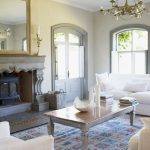Decorating a home is like making your own cookbook. Recipes and step-by-step instructions are necessary for making a dish. Using practise, you’ll be able to design every room in the house with the same recipe! Use this list of ingredients to create your own DIY home décor recipe book.
1. Start by figuring out what needs to remain and what can go
First, you need a list of all the materials you’ll need to decorate your whole home. A successful recipe requires a thorough understanding of what you have on hand, as well as what you need to acquire. As a preliminary step, I ask all of my E-Design customers about their preferences for furniture and finishes, and then I take images of their rooms so that I can see what they’d want to retain and change. I walked room by room in my own house and documented all of the current finishes – wood flooring, tile backsplash, paint colour, etc. As a last step, I made a list of all the furniture that had to remain in the room and its colour. It’s critical to know what existing finishes and their undertones you have before you begin adding new ones.
2. Select colours that complement your current finishes
In most cases, homeowners don’t aware that their cabinets and worktops are made of wood and carpet is made of synthetic fibres. These undertones are what we call them. There’s a reason why those brown kitchen cabinetry or beige carpet upstairs aren’t completely neutral. Many homeowners make the mistake of assuming that by painting their walls grey, their yellow-ish white granite counters would look good. Every time, it’ll turn away. In order to pick new colours that complement or match your current finishes, you should first attempt to determine the colours present in those finishes.
3. A style of furniture should be chosen
Furniture may be found in a wide range of designs, from simple and pared-back to ostentatious and over-the-top. The kind of furniture you choose has a significant impact on the overall mood and atmosphere of a space. Warm and comfortable are conveyed via the use of a large, overstuffed leather couch. It’s probably best suited for a family room that is often used to watch television and socialise with friends and family members. Modern, open, and spacious, a couch with a straight line and feet will appear.
4. Create a plan to bring everything together
You’re now ready to compile all of your ideas onto a single board for the purpose of creating a home Vision Board. Using a tool like PowerPoint, put photographs of your current finishes, your new colours, and your furniture style on one board. If the photographs you choose capture the general aesthetic of your house, you may want to incorporate a couple of them as well. This is how you’ll decorate every room in your house from now on! For example, you may not be able to employ all colours in every room. When decorating a space, start with one or two primary colours and then add in other accents as you go around it. However, if you have a beginning place that you return to often, you will have a better chance of succeeding.
5. Where Should You Begin Decorating Your New House?
Final question: Is there a specific space in your house that you should focus on first when it comes to decorating? No, this is not true. As soon as we moved in, I began with the simplest and fastest room to decorate. In my case, it was my front door. It was a breeze to finish this room, and I was inspired to tackle the rest of my home. My confidence in my design style and decisions was bolstered by a rapid victory. My decision-making process was centred on what will enhance our quality of life and be the quickest and simplest to implement. Living Room and Master Bedroom tend to be the most often utilised rooms in a house. The Kitchen or Home Office may be the best investments for you.


